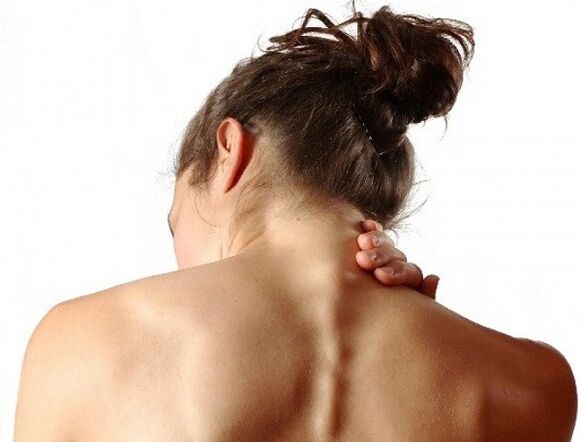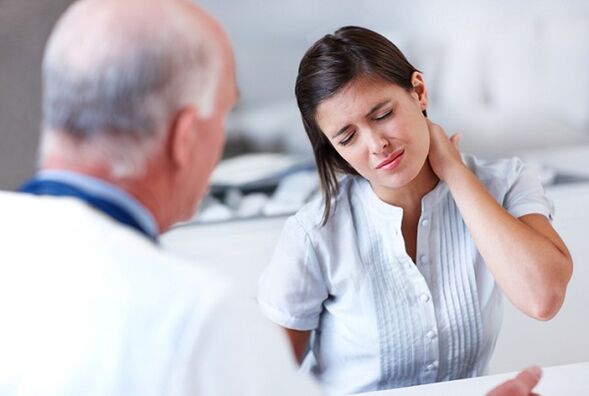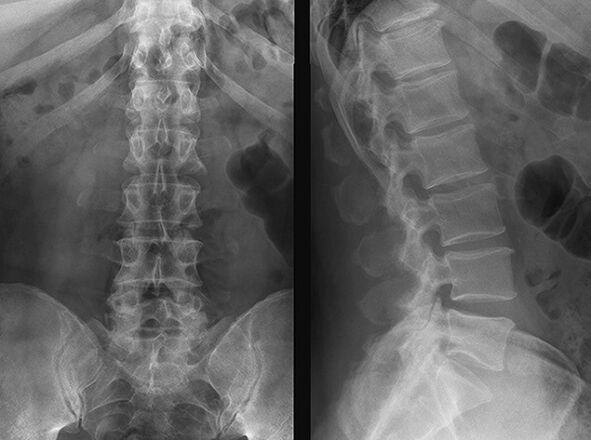Osteochondrosis is a disease of the spine, in which degenerative processes occur in the cartilage and joints. It is characterized by thinning of the intervertebral disc and a decrease in its elasticity.
Characteristics of the disease
The disease mainly affects the elderly. Although scientists state that the manifestations of this disease are increasingly beginning from the age of thirty, or even earlier. This indicates that the disease has become younger.

The intervertebral discs provide a shock -absorbing function, but in the event of pain, they are unable to cope with their task. A person suffering from osteochondrosis almost always complains of pain, while the pain can manifest itself locally and remotely. One feels stiffness in movement, lethargy and fatigue.
Basically, the pain manifests itself in the affected part of the disease.
Localization of pathology and its type
Depending on which part of the spine is damaged by the pathology, 4 types of osteochondrosis are distinguished:
- Cervical osteochondrosis. . . It occurs in the event of pathological changes in the cervical spine. The vertebrae become brittle, the load on the cervical spine increases, which can lead to disorders of the thyroid gland, pinching the arteries that supply blood to the brain.
- Osteochondrosis of the chest. . . Pathological changes occur in the thoracic spine. It is diagnosed in patients more rarely than other types, because the thoracic vertebrae are less mobile and protected by stronger muscles. This type of symptom is similar to cardiovascular disease.
- Lumbar osteochondrosis. . . This type is the most common. Because the lumbar spine has the greatest load.
- Combined. . . It occurs if there is damage to several parts of the spine at once.
Along with this, the disease can attack other joints. Often they suffer from:
- Shoulder joints. . . As a rule, the disease is caused by the transition of osteochondrosis of the cervical spine to the shoulder joint.
- Hip joints. . . It occurs due to changes in cartilage tissue and lack of fluid between the joints.
- Knee joints. . . Chondrosis can take 3 forms:
- Koenig's disease, in which cartilage tissue is affected.
- Larsen-Johansson disease, in which changes occur in the joints above the knee.
- Osgood-Schlatter disease, associated with tibial changes.
Classification and stage of manifestation of this disease
The disease can be classified according to the degree of manifestation. At the same time, determining the extent of the disease before the onset of pain is difficult. There are 4 degrees of manifestation of this disease:
- The early stages of the development of the disease. It occurs due to spinal disc displacement associated with careless weight lifting. It is characterized by an unstable sensation of pain. At this stage, the disease is difficult to diagnose, but easy to treat.
- This stage is characterized by gradual destruction of the intervertebral disc, drying and loss of shock-absorbing properties. This leads to increased tension in the blood vessels and nerve endings. The sensation of pain is increasing and is most noticeable with physical exercise and sudden movements. Treatment of the disease at this stage is conservative.
- The fibrous annulus is destroyed, and an intervertebral hernia appears. There is a deformation of the spinal space. The pain becomes noticeable. Treatment can be done only with surgery.
- At this stage, the vertebrae grow together due to the formation of osteophytes. There is pinching of the spinal tissue, the spine loses mobility and restricts a person’s movement. At this stage, the disease can cause disability and is no longer treatable.
Typical symptoms
Each type of disease has its own symptoms. For example, cervical osteochondrosis is characterized by:
- Painful sensation in the arms and shoulder girdle.
- Headache.
- Dizziness and spots in front of the eyes.
- Blood pressure instability.
- Loss of sensitivity in the fingers.
- Tinnitus.
For pathology of the thoracic region, the symptoms are characteristic:
- Pain in the heart area.
- Pain in the hypochondria.
- Lack of air due to sharp pain.
When the disease is localized in the lumbar spine, there are:
- Painful feeling in the lower back.
- Decreased sensitivity in the legs.
- Pain radiating in the legs.
- Violation of the pelvic organs.
There are also general symptoms that do not depend on the localization of the disease:
- Backache.
- Muscle cramp.
- Restriction of movement.
- Changes in pain syndrome depend on sudden load and movement.
- Numb limbs.
- Fatigue is fast.
- Decreased limb sensitivity.

Signs and manifestations of osteochondrosis
The first signs of the disease begin to appear in the first stages of development. This includes:
- Swelling and pain in the lower back after lying in one position for more than half an hour.
- The presence of pain in the back after a long sitting.
- The need to stretch the body after waking up and the inability to immediately get up and get up.
- Cramps felt in the back.
- Hair clumps and reduced sensation on the limbs.
- Unpleasant sensation in the back when bending.
- General weakness.
- Violation of reproductive function and work of internal organs.
Also, osteochondrosis can be manifested by pain that arises during weight lifting and physical activity.
Methods for diagnosing pathology
Complex methods are used to diagnose osteochondrosis. It includes:
Preliminary examination and patient questions:
- Interview the patient to clarify the complaint, the period of onset of symptoms.
- Examination of the patient's body, study of posture, gait and movement.
- Palpation of the problem area.
- Determination of pain sensitivity.

Instrumental diagnostics:
- X-rays to help identify intervertebral disc deformities.
- MRI to determine the presence of a herniated disc and its location.
- Computed tomography is similar in performance to magnetic resonance imaging, but has greater radiation levels.

Methods for treating diseases
After performing diagnostic procedures and diagnosing osteochondrosis, the doctor prescribes appropriate treatment.
Since osteochondrosis can be treated only in the first stage of development, all major measures are aimed primarily at relieving pain. To do this, use:
- Medicine.
- Physiotherapy.
- Manual therapy.
- Massotherapy.
- Diet.
As a drug treatment, non-steroidal anti-inflammatory drugs are used. They are intended to relieve the inflammatory process in the diseased area and suppress pain.
Chondroprotectors are also used to restore cartilage tissue. To maintain normal body function, immunostimulants and vitamin complexes are used.
Physiotherapy methods aim to suppress pain, normalize metabolic processes in the affected area, improve blood circulation, relieve inflammation and edema. This includes:
- Acupuncture.
- Magnetic therapy.
- Electrophoresis.
- Laser therapy.
- Paraffin therapy.
Physiotherapy methods help shorten treatment time and have fewer side effects than drug treatment.
Manual therapy is the effect of a dose of a doctor's hand on the affected back, to remove blockages that interfere with the normal functioning of joints, muscles, ligaments.
Therapeutic massage can only be performed by a specialist, and aims to relieve muscle tension, restore lost vertebrae and normalize blood circulation. The procedure should be performed at least three times a week.
The diet for osteochondrosis aims to normalize weight, improve blood circulation, replenish collagen, eliminate calcium and mineral deficiencies, and help control fluid and salt intake. The diet should be balanced and contain plenty of plant foods. In the fight against osteochondrosis, it is necessary to exclude foods such as: strong coffee and tea, foods rich in salt and sugar, carbonated beverages and fatty foods.
The disease, during this procedure, can be improved and only in difficult stages that require surgical intervention.
Preventive measures
To prevent this disease, it is necessary to lead a healthy lifestyle and give up bad habits, implement physical activity, use orthopedic mattresses and pillows for sleeping, avoid using uncomfortable shoes, better use orthopedic shoes.
You should also monitor your diet and maintain a healthy weight. With long periods in a static state, it is necessary to allocate time for exercises that help normalize blood circulation.
Also, for the prevention and prevention of this disease, you can undergo sanatorium treatment and general strengthening massage.

























